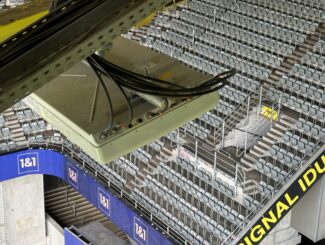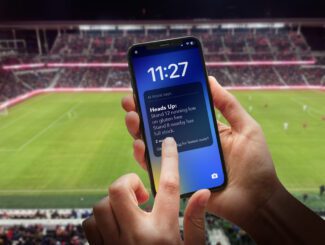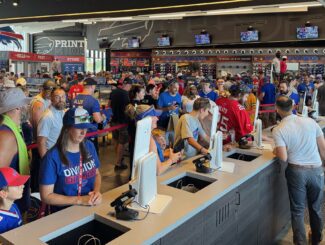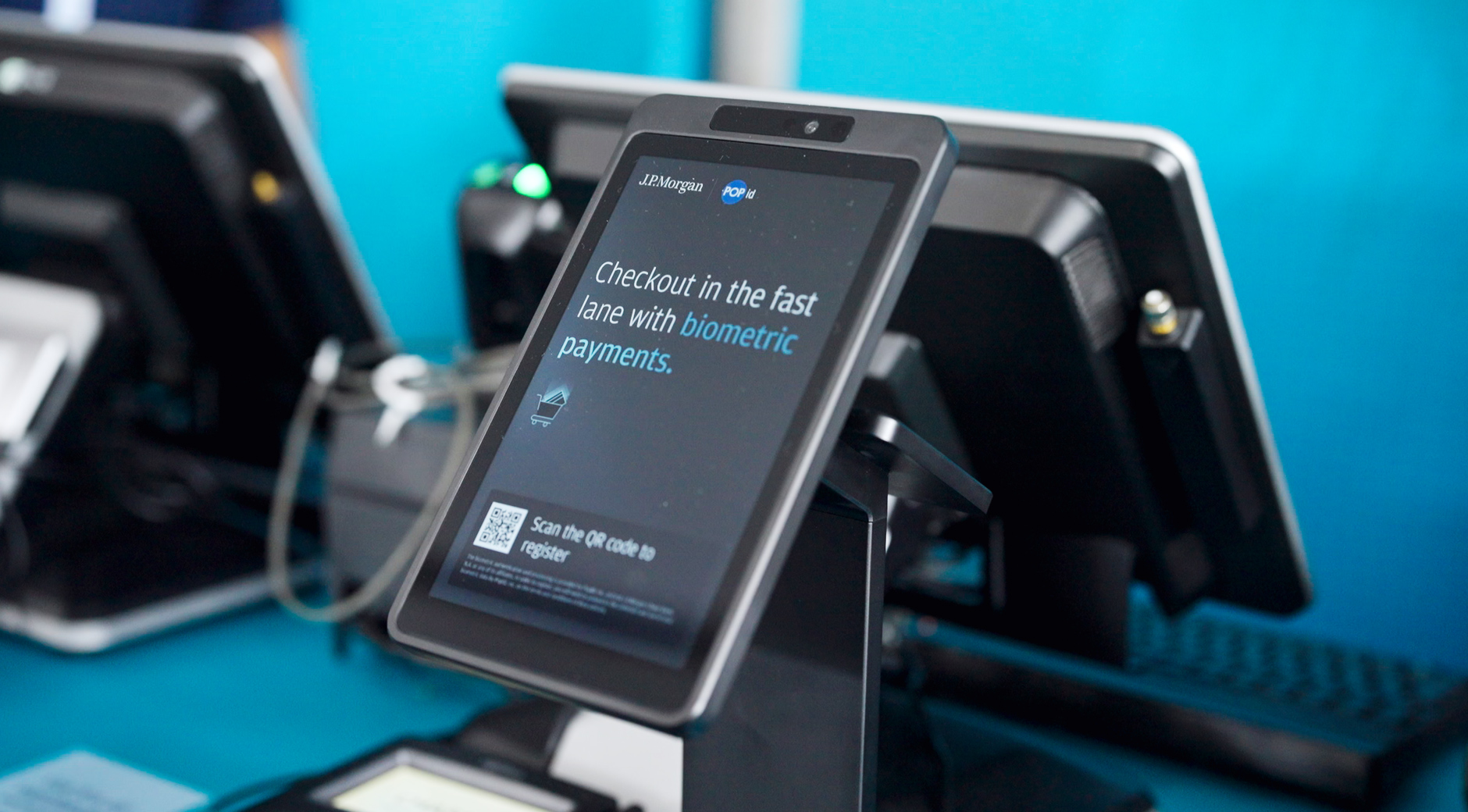
While calling its initial foray a “pilot” project, J.P. Morgan Payments said its deployment of facial-authentication payment verification systems at the recent F1 race in Miami is just the start of its planned presence at sports and entertainment venues.
Prashant Sharma, the executive director for biometrics and identity solutions at the banking giant J.P. Morgan, said the company’s recent deployment of payment terminals at two merchandise stores at the Miami Grand Prix event is just the start of a strategy that will include more deployments of biometric-based payment systems at stadiums in the near future.
“We’re still in pilot phase,” Sharma said in a phone interview, where he also called stadiums “a key vertical” for J.P. Morgan’s nascent “omnichannel” retail strategy, where technology like biometrics are being deployed to improve the customer purchasing journey in many types of retail operations. When asked if more deployments at stadiums were coming soon, Sharma replied yes, saying he expected more to surface in the next few months.
A big player enters the stadium biometric payments race
If you read Stadium Tech Report regularly, it’s no surprise that biometric-based systems are making big inroads at stadium concession and retail stores. While biometric systems of all types are exploding everywhere for various authentication purposes, in stadiums the face- and palm-based systems deployed so far are typically aimed at reducing the time spent in lines, either at entry gates or when purchasing food and beverage or merchandise.
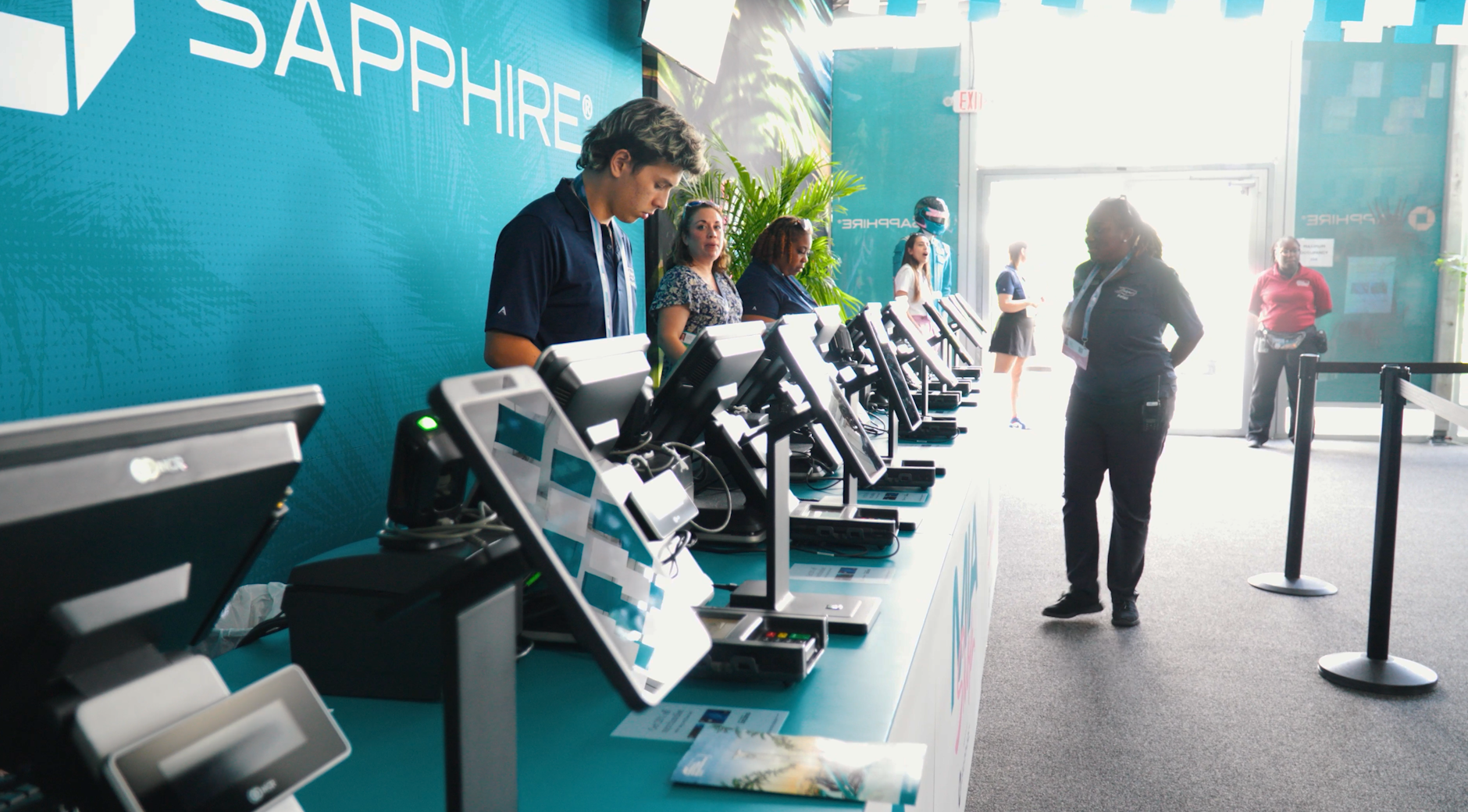
Companies as diverse as Wicket, a startup with facial-authentication software being used by stadiums for both concessions and ticketing, and Amazon, a retail giant who has its Amazon One palm-based biometric systems in at many stadium stores, are all trying to see if fans will opt in to using biometric systems in order to get inside faster, or to spend less time away from the game when grabbing a beer and a hot dog.
Other participants in the nascent stadium biometrics payment marketplace include IDmission, a company that does ID verification, which paired up with checkout-free technology provider Zippin and caterer Aramark to deploy face-based payment and ID verification systems at the Denver Broncos’ Empower Field at Mile High last NFL season.
Into that market foray now steps J.P. Morgan Payments, which is an arm of JP Morgan Chase & Co., the largest bank in the world with assets of $2.6 trillion (according to Wikipedia). After experimenting with a single biometric terminal at the 2023 race, Sharma said for this year’s event the two merchandise stores had biometric terminals at every checkout lane.
Like other providers of similar technologies, Sharma cited the attributes of biometric systems, including their ability to speed up transaction times while simultaneously providing better security.
“Opening up a wallet, taking out a card and tapping it, and then entering in a phone number for identity is a messy process,” he said. By enrolling beforehand, he said, customers using biometric systems could have “a much more seamless experience.”
Signing customers up is the challenge
While enthusiastic about their offerings, pretty much every provider of biometric systems for payment, ticketing and other transactions admits there is still a hill to climb in getting customers to sign up for the systems. Misconceptions about the reach of the technology (such as the fact that these systems do not keep actual photos used to sign up for the service) still make many potential users leery to share sensitive information like a selfie, or in the case of age verification, photos of their state-issued identification cards like drivers’ licenses.
Even though J.P. Morgan is a new name right now in the stadium marketplace, Sharma said the company’s size and reputation might make it easier for J.P. Morgan to convince customers to participate.
“One of the questions is, can you trust the provider who’s bringing this to the market,” Sharma said. “This [J.P. Morgan] is an entity that consumers can trust.”
Figuring out the right technology mix
One of the next steps for J.P. Morgan as it proceeds forward is a decision about how many features it wants to provide, and what technology partners it will choose along the way. In Miami, the facial-authentication systems might have been faster than using a card, but fans at the stores still needed to have a staffer first check out their items. Stores from other providers like Wicket, IDmission and Amazon are typically utilizing biometrics as part of a self-service process that streamlines transactions further by eliminating as much human interaction as possible.
Sharma declined to name any of the technology providers J.P. Morgan used to run the terminals at the F1 race. However, the screen of the device used in Miami shows the logo of a facial recognition software company called PopID. For the future, Sharma said the goal is “to look through all these provider companies, then partner and scale.”
Then J.P. Morgan will still face the challenge of actually getting into stadiums, which can be a confusing path that can encounter multiple potential approval circles, from concessionaires to venue IT teams to existing point of sale systems. In Miami, J.P. Morgan did likely benefit from its parent companies having multiple sponsorship relations with the race, which is always a powerful way to get a venue to consider your technology offering.



